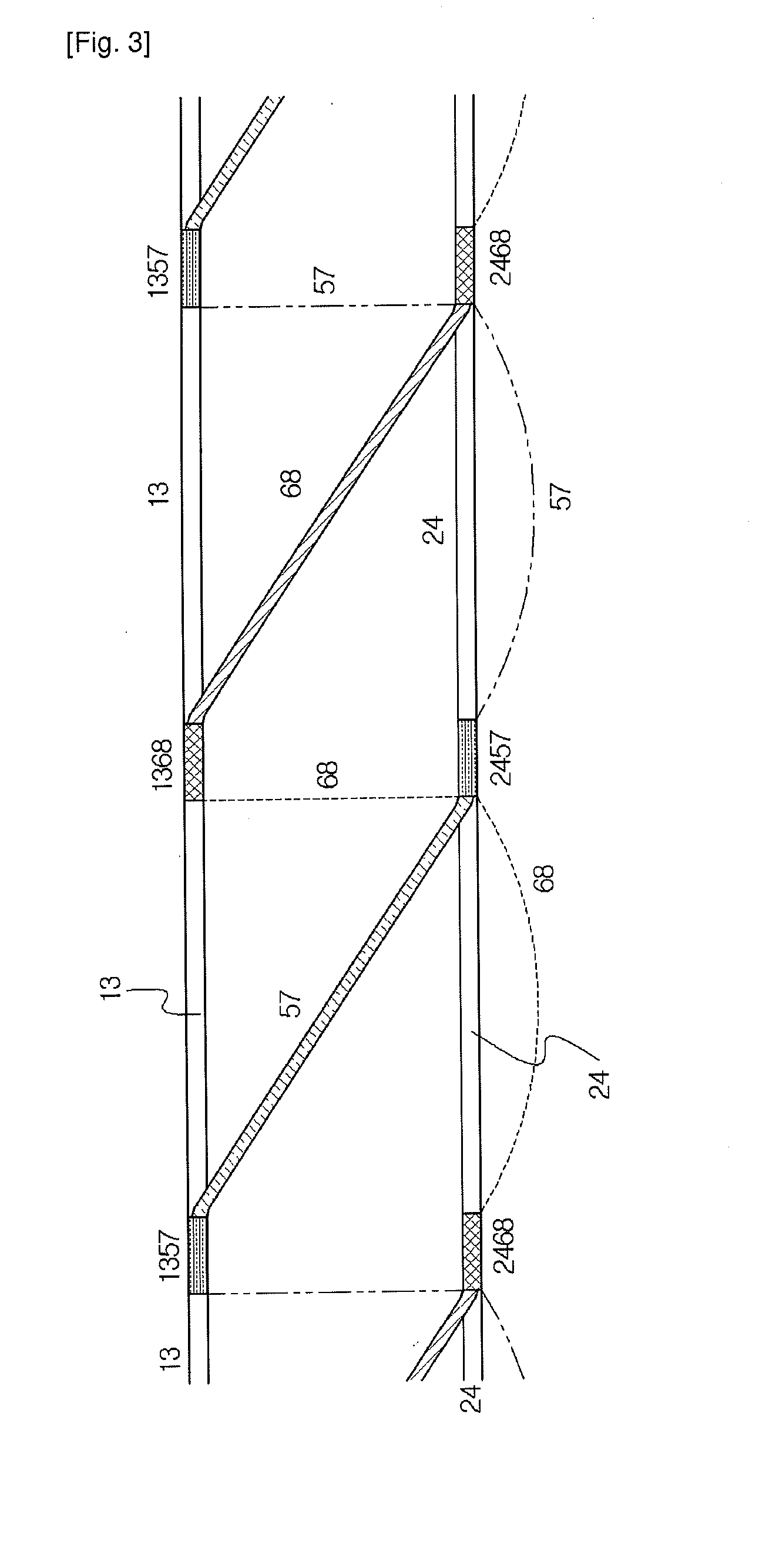3D fabric and preparing thereof
- Summary
- Abstract
- Description
- Claims
- Application Information
AI Technical Summary
Benefits of technology
Problems solved by technology
Method used
Image
Examples
Embodiment Construction
[0115]Preferred embodiments of the present invention will now be described in detail with reference to the accompanying drawings. It should be noted that whenever possible, the same reference numerals will be used throughout the drawings and the description to refer to the same or like parts. In describing the present invention, detailed descriptions of related known functions or configurations are omitted in order to avoid making the essential subject of the invention unclear.
[0116]As used herein, the terms about, substantially, etc. are intended to allow some leeway in mathematical exactness to account for tolerances that are acceptable in the trade and to prevent any unconscientious violator from unduly taking advantage of the disclosure in which exact or absolute numerical values are given so as to help understand the invention.
[0117]The term fabrics is defined to include woven fabrics, knitted fabrics, felt fabrics, plaited fabrics, non-woven fabrics, laminated fabrics and mold...
PUM
| Property | Measurement | Unit |
|---|---|---|
| Temperature | aaaaa | aaaaa |
| Temperature | aaaaa | aaaaa |
| Length | aaaaa | aaaaa |
Abstract
Description
Claims
Application Information
 Login to View More
Login to View More - R&D
- Intellectual Property
- Life Sciences
- Materials
- Tech Scout
- Unparalleled Data Quality
- Higher Quality Content
- 60% Fewer Hallucinations
Browse by: Latest US Patents, China's latest patents, Technical Efficacy Thesaurus, Application Domain, Technology Topic, Popular Technical Reports.
© 2025 PatSnap. All rights reserved.Legal|Privacy policy|Modern Slavery Act Transparency Statement|Sitemap|About US| Contact US: help@patsnap.com



